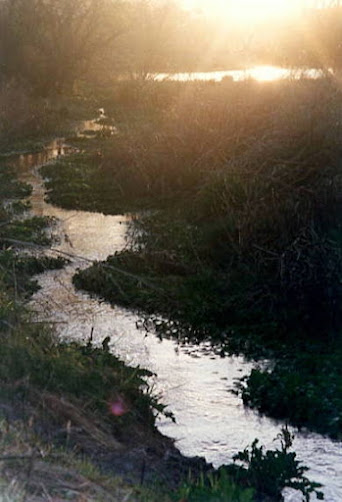Water
Over the past few years, I’ve been told by many of my fellow Arivacans that they would love to attract more birds into their yards, and been asked what I think is the best way to do that.
My answer is always the same: “Provide clean, fresh water”.
Although birds and other wildlife all have 4 basic needs - food, shelter, nesting places, and water - many birds can find the first 3 of these things in the areas around Arivaca where there are plentiful native trees, shrubs, and grasses.
However, fresh water is something that is not plentiful during much of the year around here. In addition, the places where water IS available may not be able to be accessed safely by birds, such as livestock water tanks (which are too deep) and/or where there is also a lot of human activity such as Arivaca Lake, which can make them reluctant to visit the shoreline.
Even in the Pacific Northwest with its many lakes and rivers, the wet winters give way to hot, dry summers with very few shallow-water areas for birds. Plus, the huge increase in the human population of its urban and suburban areas means that much of the available shoreline habitat is used for recreation and exercise throughout the warm months.
So if you provide a quiet place in your garden for birds to wade in safely to drink and bathe, they will flock to it in droves!
Here’s why:
Everybody needs it. Clean water is an essential need for all birds, as well as insects and other creatures. Birds need clean water not only for drinking, but equally important as part of their bathing and preening regimen. Birds need to preen their feathers several times a day in order to keep them in good condition for flying and insulation, and they prefer to clean them before preening and combing them with oil from a gland at the base of their tail. Many insects, including bees, also need water for preening. Watching bees as they preen is quite cute and heartwarming too. Even a small birdbath or water feature will be a huge attraction year-round!
Size doesn’t matter much, but shape and substance does. Birdbaths and other water features should have shallow, sloping sides and a rough finish, so that birds of all sizes can grip the edge and the bottom of it while drinking or wading in to bathe, or to push off quickly if they need to flee from a predator. Concrete with exposed aggregate and old rough clay saucers both work great Avoid metal or glazed ceramic, which are both very slick, or add small pebbles to the sides and bottom of them to give birds (and bees) some traction.
Location. Birdbaths and other water features need to be within quick flight of a tree or shrub for safety, just like bird feeders. Bathing is the single most dangerous activity for a bird! Have you ever noticed how most of them do it for only a couple seconds before stopping to look all around themselves for predators? If water is positioned too far out in the open, songbirds will definitely be vulnerable to attack from small hawks, shrikes, etc.
To discourage outdoor cats from lying in wait underneath them to ambush the birds, put your thorny trimmings from mesquites, roses, or other plants on the ground beneath the birdbath, or stretch plastic netting over the soil. Better yet, keep your cat indoors where it can’t kill birds, lizards, frogs, and other wondrous wildlife. For more info on how and why this is so important, visit https://abcbirds.org/program/cats-indoors
Sound. Small fountains or bubblers attract birds by the sound of running water, which mimics the places in nature that they prefer to bathe in and drink from. Fountains that have a tiny trickle or mist especially attract hummingbirds, who typically only drink and bathe in flight. Bats also drink “on the wing” from fountains (as well as from hummingbird feeders).
Cleanliness. Birdbaths and other water features need to be cleaned regularly all year round. Algae and bacteria build up and much quicker in summer, when the weather is warm, but regular cleaning is important year-round. A quick "scrub-and-swish" with a scrub brush will remove any stuck-on goo, followed by a rinse with the hose or watering can before re-filling. Birds definitely don’t like to drink or bathe in muck (me neither).
What about freezing weather? Small birdbath heaters made specifically for outdoor use can be a huge help in the coldest months. These are thermostat-controlled to keep the water just barely above freezing, and do not ever make the water warm. They are also well-insulated for wet and cold outdoor conditions, and can be left in the water all year if you want.
Resources for more info on attracting birds to your garden
Nationwide info:
Desert Southwest info:
Pacific Northwest info:
“Landscaping for Wildlife in the Pacific Northwest” and “Living with Wildlife in the Pacific Northwest” by Russell Link, Univ. of WA press (available at most public libraries)
Photo credits:
- Summer Tanager and Blue Grosbeak in clay saucer birdbath. by Emily Bishton
- Black-headed Grosbeak in clay saucer birdbath. by Emily Bishton
- Gambel's Quail and European Collared Dove in clay saucer birdbath. by Emily Bishton
- American Robins in aggregate concrete birdbath. by Emily Bishton
- Lesser Goldfinches in fountain. by Emily Bishton







